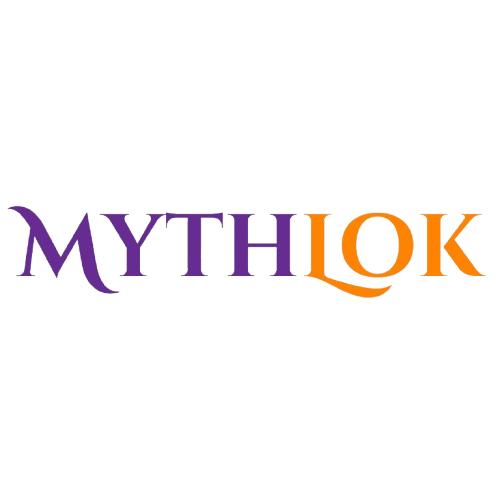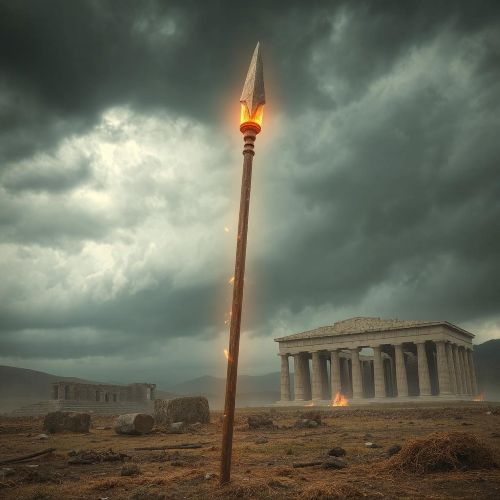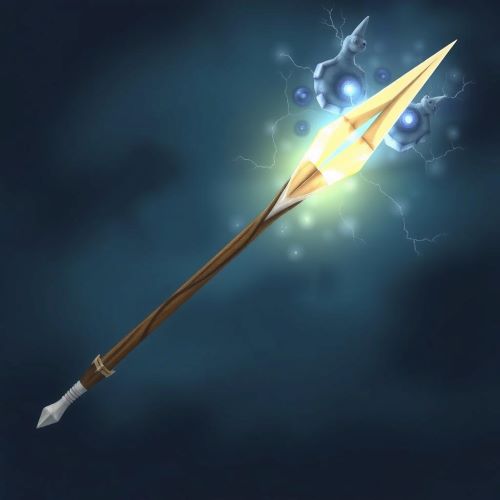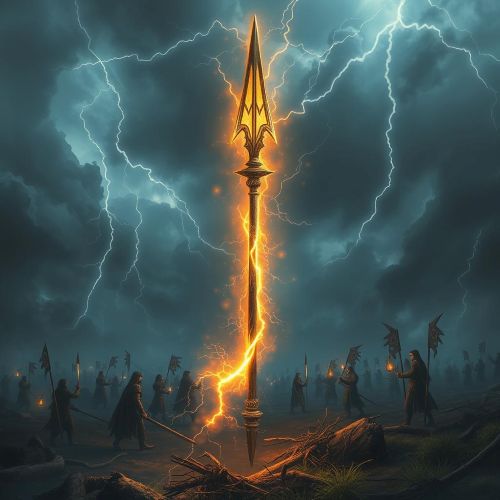Ame-no-Nuhoko : The Jewelled Spear
Ame-no-Nuhoko
Introduction
Japanese mythology is rich with stories of gods, creation, and sacred artifacts, each carrying deep cultural and spiritual meaning. Among these legendary objects, the Ame-no-Nuhoko, or “Heavenly Jeweled Spear,” stands out as a symbol of divine power. More than just a weapon, this celestial spear is said to have played a key role in shaping Japan itself. Often depicted as a naginata adorned with jewels, it represents authority and creation, embodying the profound connection between the gods and the land they formed.
Origins
Ame-no-Nuhoko, or the “Heavenly Jeweled Spear,” is a central artifact in Japan’s creation myth, first recorded in the Kojiki and Nihon Shoki, two of Japan’s oldest historical texts. These chronicles recount how the celestial gods entrusted this sacred spear to Izanagi and Izanami, the divine couple tasked with bringing order to the formless world.
At the dawn of creation, the universe was a swirling, chaotic sea. Standing upon the Floating Bridge of Heaven, Izanagi and Izanami dipped Ame-no-Nuhoko into the murky depths, stirring the waters below. As they lifted the spear, briny droplets dripped from its tip, solidifying into land—the first island, Onogoro-shima. This act marked the beginning of the Japanese archipelago and established the divine authority of the two deities. More than just a weapon, Ame-no-Nuhoko embodies the creative force that shaped Japan itself.
Think you know your myths and legends? Dive into the world of ancient stories and test your knowledge with our engaging quizzes on Mythlok!
Powers
Ame-no-Nuhoko is more than a celestial tool of creation—it is a symbol of divine power, authority, and balance. Beyond shaping the first island, this sacred spear embodies the gods’ ability to command the elements and maintain order in the cosmos.
Its most renowned power is creation, as it transformed a chaotic, watery void into solid land, marking the beginning of Japan’s existence. However, its influence extends beyond mere land formation. As a weapon of the gods, it represents supreme authority, signifying the right to rule and govern both nature and society. Some legends suggest that Ame-no-Nuhoko holds protective qualities, warding off evil and ensuring harmony in the world.
In certain interpretations, the spear is even linked to elemental control, with its wielder able to summon storms and stir the seas. This connection reinforces its role as a force of both creation and balance, ensuring that those who wield it must do so with wisdom and restraint.
Owners/Users
Ame-no-Nuhoko is inseparably linked to the primordial deities Izanagi and Izanami, the divine pair responsible for shaping Japan. As the wielder of the sacred spear, Izanagi stirs the chaotic waters, setting creation into motion. Izanami, his counterpart, shares in this divine act, bringing forth life and deities that populate the mythological landscape. Together, they symbolize both creation and balance, reinforcing the spear’s role as a tool of order and transformation.
While no other gods are directly associated with wielding Ame-no-Nuhoko, its influence echoes throughout Japanese mythology. The spear stands as a testament to divine authority, its legacy woven into cultural traditions and Shinto beliefs. In modern interpretations, its legend finds new life in manga, anime, and literature, where its powers inspire characters and stories that continue to captivate audiences.
Instances used
The most famous use of Ame-no-Nuhoko is in the creation of Onogoro, the first island, as recorded in the Kojiki and Nihon Shoki. This moment is foundational in Japanese mythology, representing divine intervention and the emergence of order from chaos. The spear’s role in shaping the land cemented its status as a sacred artifact, embodying the gods’ authority and creative power.
Beyond this creation myth, Ame-no-Nuhoko carries deep symbolic significance in Japanese culture. It is referenced in rituals and ceremonies that honor the gods and the land, reinforcing the connection between the divine and the people. In traditional Japanese art, the spear frequently appears in paintings, sculptures, and literary works that depict the cosmic origins of Japan.
Another notable instance tied to Ame-no-Nuhoko is its association with Izanagi’s purification. After his harrowing journey to the underworld (Yomi) to retrieve Izanami, he returned tainted by death and sought to cleanse himself. In doing so, he gave birth to three major deities—Amaterasu, Tsukuyomi, and Susanoo—highlighting the spear’s connection to renewal and transformation.
In modern media, the legend of Ame-no-Nuhoko continues to inspire. Whether portrayed as a powerful artifact in video games, anime, or literature, its legacy endures as a symbol of divine creation, power, and balance.
Frequently Asked Questions
Lorem ipsum dolor sit amet, consectetur adipiscing?
Lorem ipsum dolor sit amet, consectetur adipiscing elit. Praesent convallis vestibulum justo, ac tincidunt nunc vehicula quis. Nullam id dolor quis orci malesuada feugiat. Curabitur aliquet libero at urna ullamcorper, ac ultricies nulla dapibus.
Lorem ipsum dolor sit amet, consectetur adipiscing?
Lorem ipsum dolor sit amet, consectetur adipiscing elit. Praesent convallis vestibulum justo, ac tincidunt nunc vehicula quis. Nullam id dolor quis orci malesuada feugiat. Curabitur aliquet libero at urna ullamcorper, ac ultricies nulla dapibus.
Lorem ipsum dolor sit amet, consectetur adipiscing?
Lorem ipsum dolor sit amet, consectetur adipiscing elit. Praesent convallis vestibulum justo, ac tincidunt nunc vehicula quis. Nullam id dolor quis orci malesuada feugiat. Curabitur aliquet libero at urna ullamcorper, ac ultricies nulla dapibus.
Lorem ipsum dolor sit amet, consectetur adipiscing?
Lorem ipsum dolor sit amet, consectetur adipiscing elit. Praesent convallis vestibulum justo, ac tincidunt nunc vehicula quis. Nullam id dolor quis orci malesuada feugiat. Curabitur aliquet libero at urna ullamcorper, ac ultricies nulla dapibus.
Lorem ipsum dolor sit amet, consectetur adipiscing?
Lorem ipsum dolor sit amet, consectetur adipiscing elit. Praesent convallis vestibulum justo, ac tincidunt nunc vehicula quis. Nullam id dolor quis orci malesuada feugiat. Curabitur aliquet libero at urna ullamcorper, ac ultricies nulla dapibus.
Watch
Source
Chamberlain, Basil Hall, translator. The Kojiki: Records of Ancient Matters. Tokyo: The Asiatic Society of Japan, 1919.
Philippi, Donald L., translator. Kojiki. Princeton University Press, 1968.
Aston, W. G., translator. Nihongi: Chronicles of Japan from the Earliest Times to A.D. 697. Charles E. Tuttle Company, 1972.
Bocking, Brian. A Popular Dictionary of Shinto. Curzon Press, 1996.
Hardacre, Helen. Shinto: A History. Oxford University Press, 2017.
Picken, Stuart D. B. Essentials of Shinto: An Analytical Guide to Principal Teachings. Greenwood Press, 1994.








